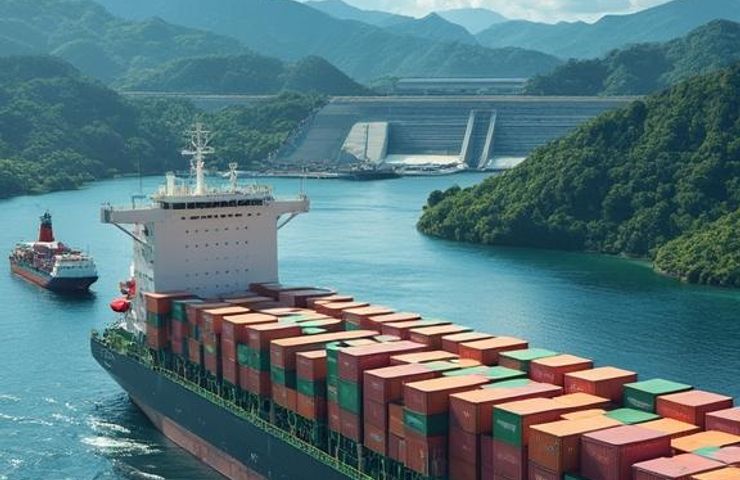
Malaysia-Japan Hydrogen Corridor: The New Green Energy Superhighway
July 28, 2025What if your clean energy solution didn’t just power up industries—but sparked a complete energy rethink between two nations? That’s exactly what’s starting to unfold as Malaysia and Japan team up to build Southeast Asia’s most ambitious green hydrogen supply chain. And right at the heart of it? Sarawak, turning rushing waterfalls into clean fuel that’s making its way straight to Tokyo Bay.
This isn’t theory or another “someday” project—it’s real, it’s underway, and it’s got heavyweights like SEDC Energy, Petros, Sumitomo, and ENEOS leading the charge. We’re not just talking about a single green hydrogen facility—we’re witnessing how green hydrogen Malaysia is set to reshape how Japan powers its future.
What This Means
Japan is hunting for clean, reliable power. Malaysia has the natural resources and the ambition. Hydrogen is the bridge that connects them.
With Japan aiming to consume 3 million tonnes of hydrogen by 2030, it’s got big aspirations—but limited capacity to make it at home. Enter Sarawak, a region overflowing with hydropower potential and eyeing the export of up to 240,000 tonnes of green hydrogen by 2035. This emerging partnership flips the script on energy dependency, swapping oil tankers for hydropower hydrogen production and long-term climate alignment.
The Technology: The Magic Ingredient
So how do you bottle clean power and ship it thousands of kilometers away? Using some serious engineering, actually—and it works like a charm.
- Methylcyclohexane (MCH): Hydrogen bonds with toluene to create a stable liquid. It’s easy to store, easy to ship—and once it lands in Japan’s clean energy import hubs, the hydrogen is separated and ready for action.
- Ammonia: Another carrier method—hydrogen is combined with nitrogen to create NH3. Japan then uses this to fuel industry, power generation, and even shipping.
- Carbon Capture and Storage (CCS): To boost the green profile even further, any emissions from the process are captured and stored deep below in fields like Malaysia’s M3 offshore site.
It’s a smart, scalable system that keeps emissions low and potential high—perfect for decarbonizing everything from trucks to turbines.
Strategic Angle
This isn’t just about tech—it’s a full-on shift in the region’s energy map.
The team behind it reads like a who’s who of industry players:
- SEDC Energy and Petros are powering the production game in Sarawak and getting all the pieces in place on the ground.
- Sumitomo Corporation is crunching the numbers and firming up the financing and agreements needed to make this thing fly.
- ENEOS is the tech lead for hydrogen conversion and transport—ensuring what’s made gets safely to Japan.
- JAPEX, JGC, and K Line are handling the full logistics chain—from what holds the hydrogen to what carries it across the sea.
- Petronas CCS Ventures adds depth on the carbon management side, making sure emissions stay underground where they belong.
It’s got serious political backing, too. Prime Minister Anwar Ibrahim and Premier Abang Johari are all in. On the receiving end, Prime Minister Shigeru Ishiba of Japan isn’t just watching—he’s betting big on this partnership.
Zooming Out
Let’s zoom out for a second. For years, Malaysia’s main energy exports to Japan were oil and LNG. Fast-forward to today? It’s decarbonized hydrogen in liquid form.
It all started to pick up speed in late 2023 with a stack of MOUs and feasibility studies. Now we’re into the FEED phase, with commercial operations set for a 2030 debut. But make no mistake—this isn’t just about energy. It’s bigger than that. We’re talking about massive job creation, private-sector investment, and a bold leap into green tech leadership. Malaysia gets economic growth. Japan gets the scalable hydrogen carrier MCH it needs to clean up its industrial core.
Final Shot
This isn’t just a project—it’s a blueprint for the Asia-Pacific hydrogen economy.
Sarawak is unlocking new value from its natural resources. Japan is plugging green hydrogen straight into its factories, ships, and city grids. The hardware’s in place. The alliances are solid. The vision is clear. This is what the future of energy looks like when two nations decide to build it together.
Clean hydrogen. Real exports. No smoke. No mirrors. Just waterfalls in Malaysia lighting up Japan’s tomorrow.
If you’re watching where the global energy game is headed—your eyes should be here.



 With over 15 years of reporting hydrogen news, we are your premier source for the latest updates and insights in hydrogen and renewable energy.
With over 15 years of reporting hydrogen news, we are your premier source for the latest updates and insights in hydrogen and renewable energy.